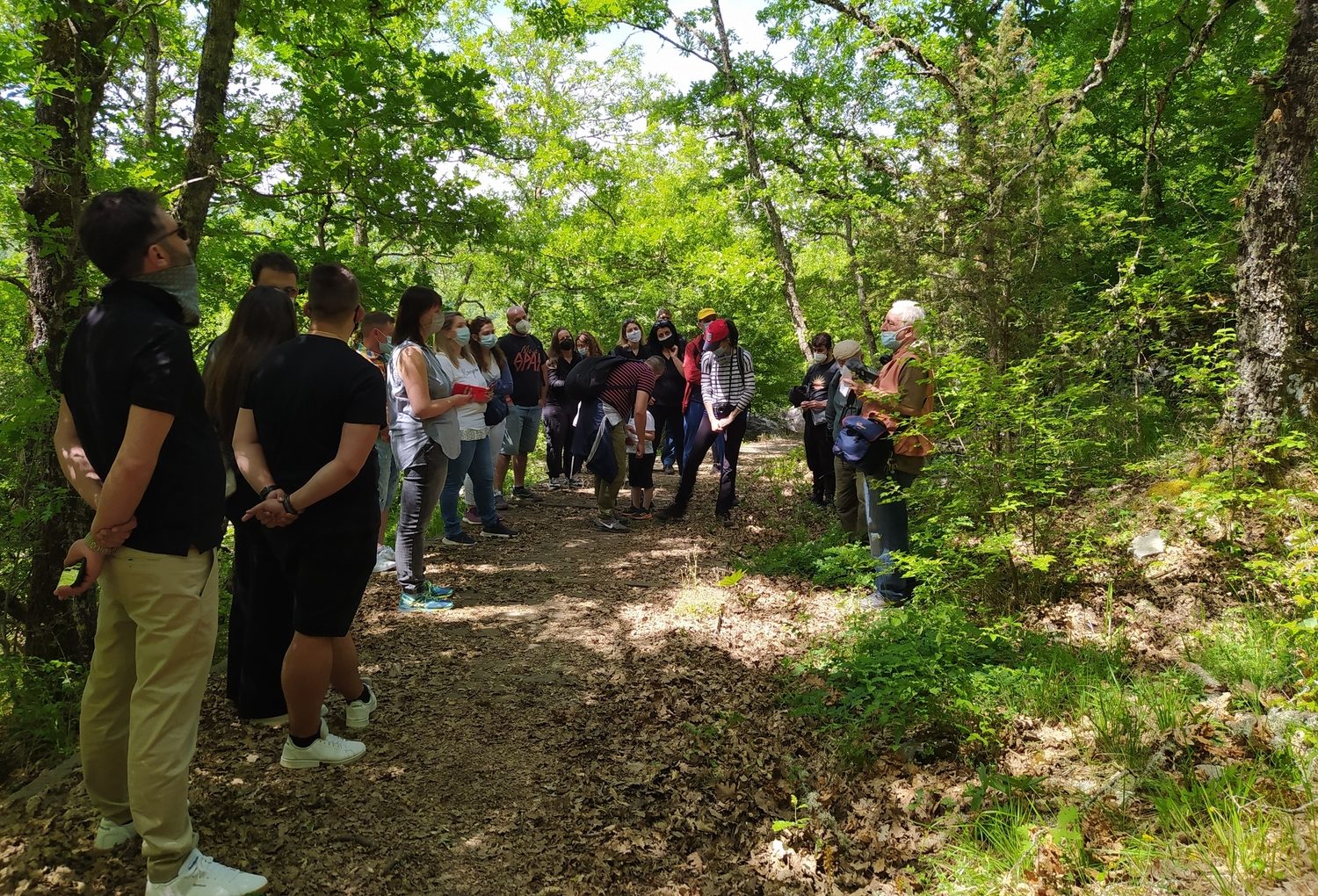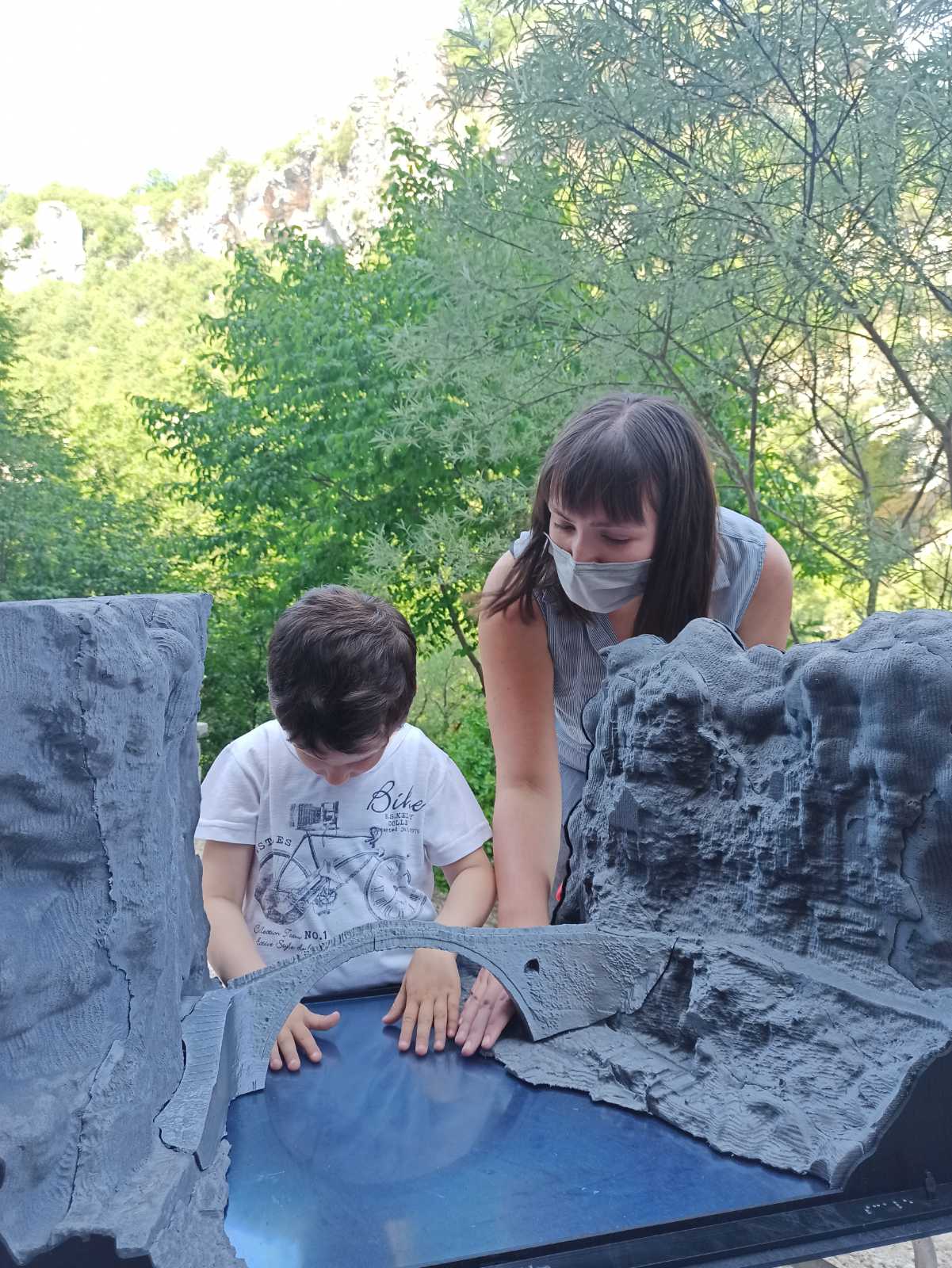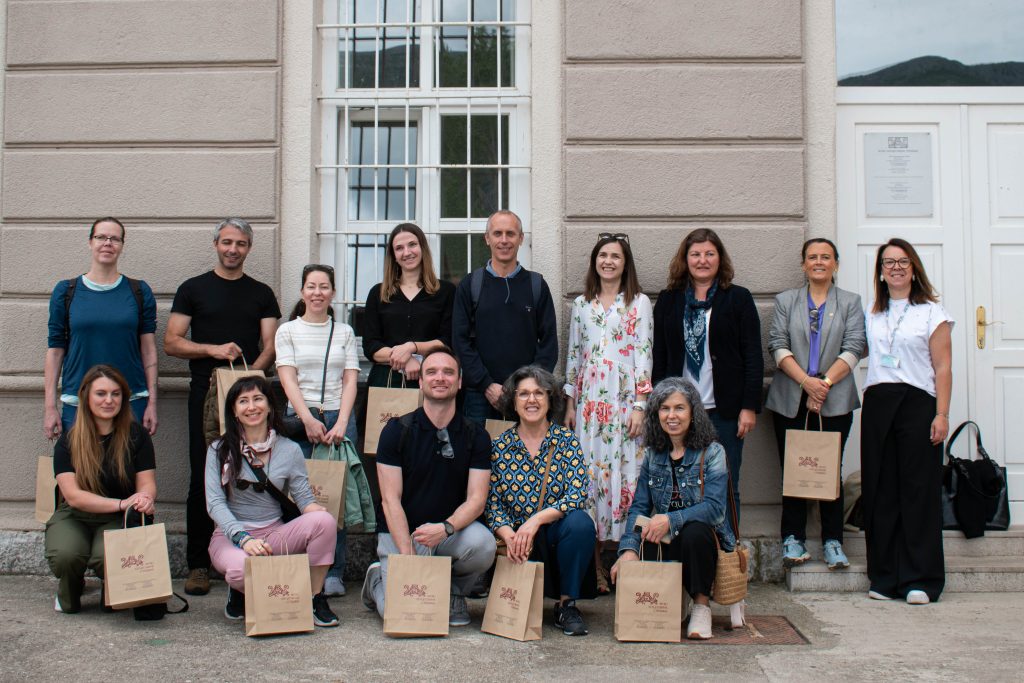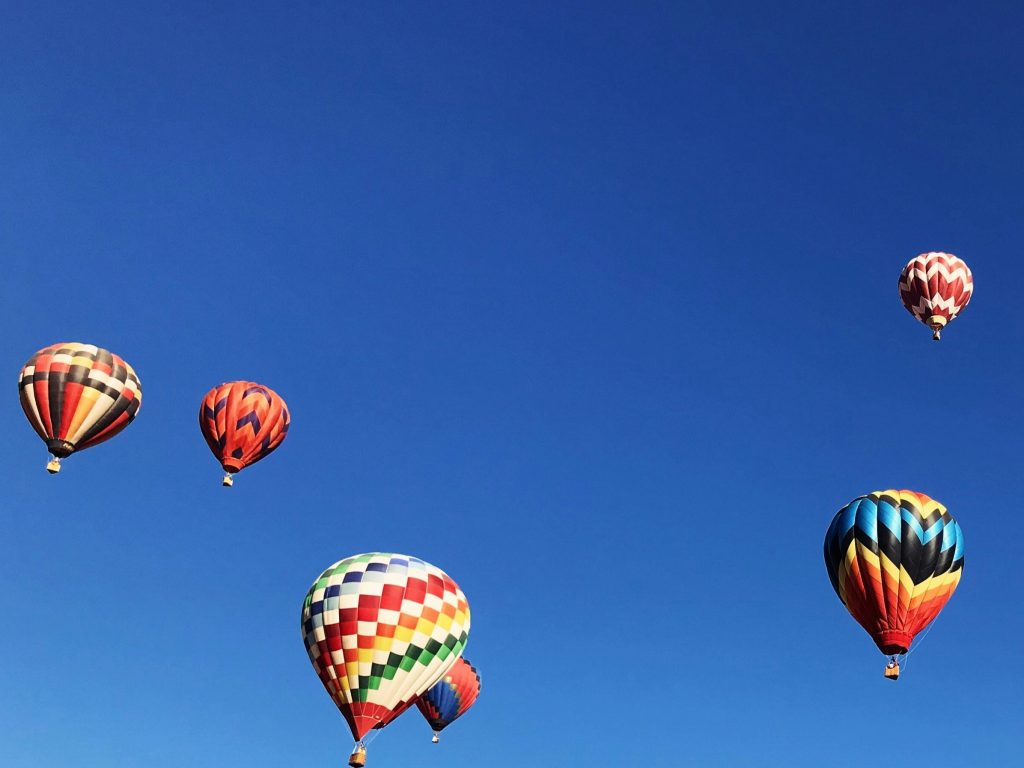Published on 13 Oct 2022
An Ecomuseum in Greece offers Listen-Touch-Feel tours for visually impaired visitors. Italian and Lebanese villages offer simulated underwater trips to archaeological sites to non-scuba divers. Villages across Europe are sharing local history through virtual visits with inhabitants. Through a mix of creativity and digital technologies, small local communities across Europe are seeking to develop socially inclusive experiences and innovative sustainable tourism models built on their cultural heritage.
Tourism has rebounded strongly after Covid, with international arrivals to Europe in January-July 2022 up 190% on the year before, getting close to 2019 levels (74% of that year, according to the UNWTO World Tourism Barometer). Good news, given the high economic and employment relevance of the sector – 10.3% of EU GDP and 11.7% of the EU labour force, including direct and indirect impacts, according to the EU Parliament in 2021 . Almost all local communities look at tourism as a potential driver of growth. But remote or rural locations lacking obvious touristic assets, such as beaches or monuments, struggle to get themselves on the map and capture the attention of potential visitors. Fortunately, modern tourism is driven by the desire to live new and engaging experiences, in nature and culture. As cultural tourism is on the rise, local cultural heritage is becoming a resource to be shared with visitors. It is not always easy. There are a ton of ancient Roman bridges, Middle-Age churches or spectacular gorges scattered across Europe. To attract visitors it is not enough to publish a nice picture on Google Maps or get an academic to explain the history of local ruins in a leaflet.
“Building on extensive work with stakeholders from local communities about cultural tourism initiatives, we found that a key differentiator is to combine social innovation methods with smart ICT tools” says Claudia De Luca, University of Bologna, partner of RURITAGE and TEXTOUR, two European research projects focusing on marginal or under-developed areas. The co-design of initiatives with stakeholders improves tourism sustainability as it provides support from a broader base of actors and greater continuity than one-off funding. The use of smart technologies helps to personalize experiences and monitor results, generating a positive feed-back loop
An innovative and inclusive experience was designed by the Ecomuseum of Zagori in Epirus, Greece, a UNESCO recognized geopark near the border with Albania. It is a “listen, touch and feel” walk for visually impaired people. It takes them along the Roman bridges and through the natural rough landscape of the area, including a soundscape with the sounds of nature and a specially designed 3D model of the landscape, with Braille texts and particular textures, produced by a local fab-lab of 3D printers (Fab-Labs Ioannina ). Visitors walk along the path with helpers, but the sounds and the 3D model let them touch and experience the fullness of the landscape. “It was truly moving to listen to a blind child asking his mother: ‘can I run my fingers on the bridge?’ when touching the model,” explains Panagiota Koutsoukou, co-founder of the Ecomuseum with Konstantinos Kaisaris, which was partially supported by a RURITAGE grant. “The main obstacle was the worries of the local Association of the Blind: they are very conservative and were worried about bringing people out into nature. But once we convinced them, the satisfaction of the participants went through the roof” says Panagiota.
Koutsoukou and Kaisaris are full of plans, even though the Covid pandemic has disrupted the Ecomuseum for the last 2 years. They are trying out the path for visitors with different disabilities, such as autism. They are working with the University of Patrasso to develop a mobile app, with which a blind person can touch a symbol and hear the sounds of the landscape (likely to be funded soon by an Erasmus project). Finally, they will participate in an European “Transhumance” network funded with €30 million by the EU: this traditional seasonal migration of shepherds and their herds from winter to summer pastures is in decline. “The goal is to develop an eco-sustainable tourism product based on visiting the Transhumance paths and at the same time to preserve a traditional practice which is part of the identity of the local people and is dying out” says Kaisaris. The hope is that this tourism will generate resources to support a tradition no more able to sustain itself.
Several initiatives launched by RURITAGE have already proven their sustainability by successfully growing after the end of the project. An example is the Walk of the Calanchi in Appignano, a small village in the scenic Marche region in Italy. The village designed a new path to visit the old town and the surrounding gullies (calanchi). It also produced a multimedia backstory to help visitors to share the living history of the place. Along the way, these visitors meet the inhabitants virtually, listen to their accounts of historical events (e.g. as partisans in WWII), and access old news articles, diaries and old pictures. They can listen to Appignano’s inhabitants’ voices in the native dialect, with translation in Italian and English. The village is now developing a resilience museum to show before and after the earthquake of 2016, with a 3D model of the landscape “as it was”. This museum will be funded by the Italian PNRR (National Recovery and Resilience Plan).
Other interesting initiatives documented in the TEXTOUR project’s action cards (factsheets) include a simulation of underwater diving to visit archaeological sites under the sea, as has been done by Cala Minnola in Italy and as planned by Anfeh in Lebanon; the digital pilgrimage along the St Olov Way across Finland, Sweden and Norway; the digital guide to the Karavanke Geopark across the border between Austria and Slovenia; the “TuoMuseo” mobile adventure game designed by the Archaeological Museum of Naples, and many more.
These initiatives are enabled in TEXTOUR by an ICT platform, with the dual role to support stakeholders with smart tourism tools for free and provide digital services to end users. The features and services were also selected through a co-design process in the Cultural Tourism labs of the project. “The ICT platform will provide a monitoring system of indicators and KPIs for the project managers” says Pedro Pereira from the Nova School of Science and Technology, University of Lisbon, leading the platform development. By April 2023 the platform will be complete with a 9-10 services portfolio (see table).
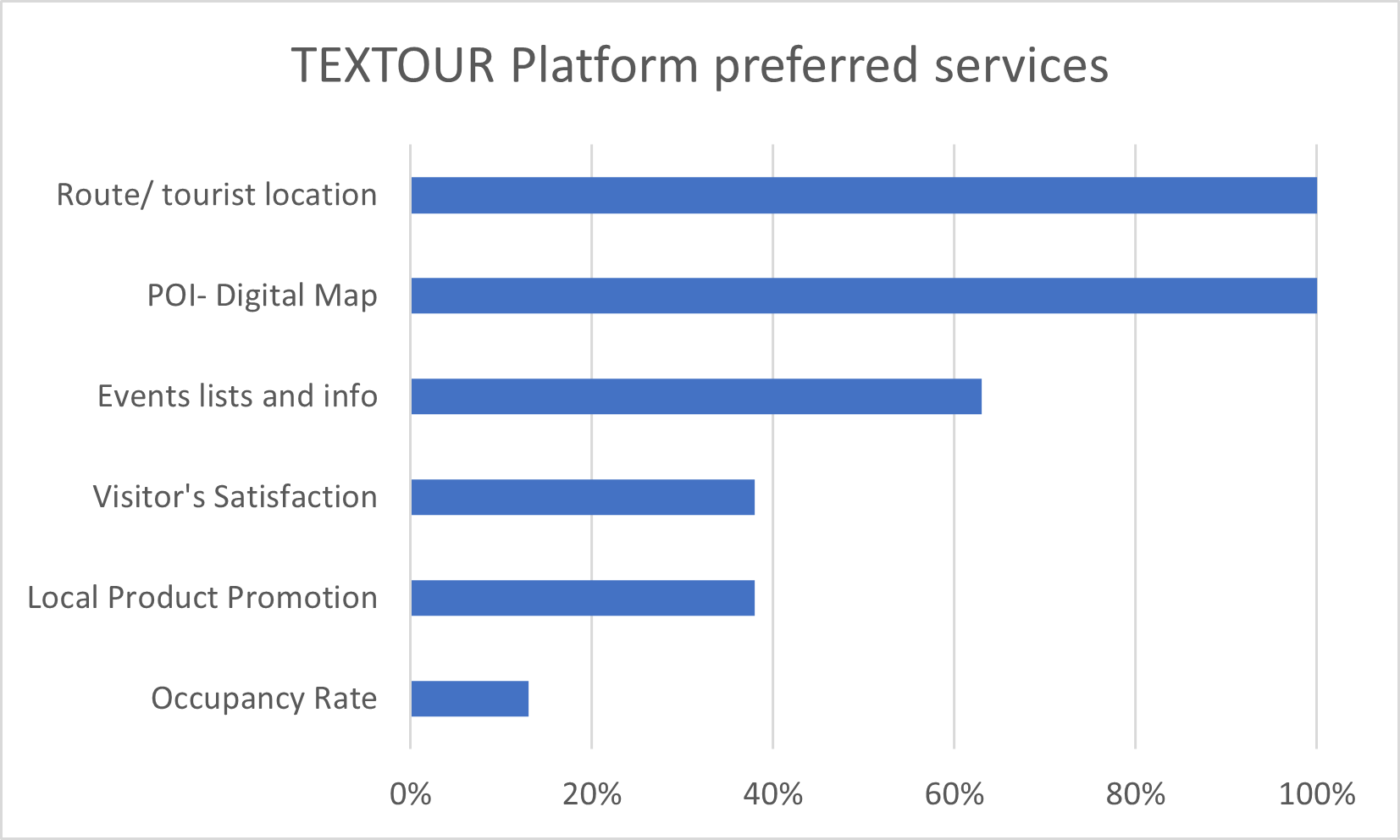
This includes providing multimedia and location details for points of interests (POI) for visitors and measuring the visitors’ satisfaction. A key aspect is to provide a simple and easy tool for local stakeholders to experiment digital tourism services. “The main difficulty was coming up with a single solution adapted to all cultures and languages” says Kashyap Raiyani, also from Uninova, responsible of the technical development.
“The participative process and engagement of different categories of stakeholders is the key for successful sustainability and at the same time the most difficult barrier to overcome” concludes Claudia De Luca. “Initially many stakeholders are deeply skeptical of this approach. But when we succeed in building trust and positive interactions, ideas generate momentum and are more likely to become pragmatic plans and then reality”.
By Gabriella Cattaneo
